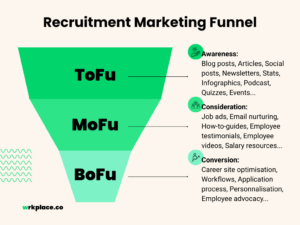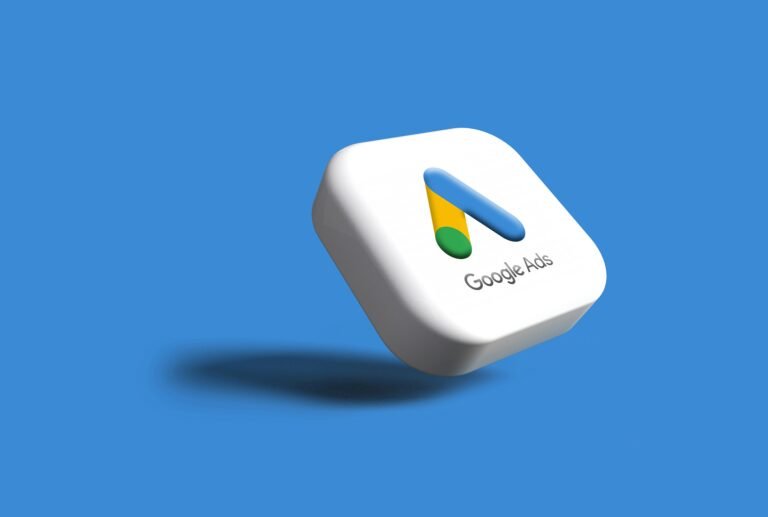Hiring top talent isn’t what it used to be. You can’t just post a job ad and hope for the best. In 2025, your candidates are expecting more; personalized outreach, seamless digital experiences, and a clear sense of what your company stands for. In our previous article we detailed what is recruitment marketing, so if you are wondering how to start with recruitment marketing, here is your practical, step-by-step guide.
Why You Need Recruitment Marketing in 2025
The job market is evolving rapidly. Candidates, especially Gen Z, act more like consumers than job applicants. They research your brand, read reviews, scan your social channels, and compare you to your competitors long before they apply.
Recruitment marketing bridges the gap between employer branding and hiring. It helps you:
- Showcase your culture and values where candidates are looking
- Create content that speaks to different candidate personas
- Attract the right people
- Guide potential hires down a conversion funnel, from awareness to application
Without a strategic plan, you risk fading into the background.
Step 1: Build a Solid Recruitment Marketing Strategy
Before you dive into videos, emails, and job ads, you need a game plan.
Define Your Goals
Your goals determine your tactics, so you need to quantify them.
Are you trying to reduce time to hire? Increase qualified applicants? Build awareness in a new market?
Be specific, use SMART goals (Specific, Measurable, Achievable, Relevant and Time-bound).
Outline Your Candidate Personas
Different roles attract different behaviors. A developer in Berlin won’t respond the same way as a sales rep in Texas. So break down your ideal talent pools:
- What are their goals or pain points?
- Where do they spend time online?
- What motivates them to change jobs?
Don’t guess it, use real research, surveys, interviews, even exit data, to build these profiles.
Align With Your EVP
Your Employer Value Proposition (EVP) is the foundation. It should shape every message you send. If your EVP isn’t clear, work with your employer branding team first as recruitment marketing can’t fix a broken core message.
Tip: Don’t just copy your competitors’ EVP. Hire authentically. A quirky startup should sound different from a structured law firm.
Step 2: Map Your Recruitment Funnel
Think like a marketer. Your candidate journey has stages:
Awareness → Consideration → Interest → Application → Hire
Each stage needs different touch points.
At the Top of the Funnel (Awareness)
This is where you build recognition. Candidates start thinking, “Hmm, this company looks interesting.” Use:
- Social media campaigns that reflect your brand tone and EVP
- Recruitment videos featuring real employees in real roles
- Content marketing like day-in-the-life blog posts or culture stories
Be consistent, but don’t just promote open roles. Let them fall in love with your company first.
Middle of the Funnel (Consideration + Interest)
Now they’re digging deeper. Make sure your careers site is flawless, fast, mobile-friendly, and full of relevant content.
Also use:
- Email nurturing campaigns targeting passive talent
- Employee stories that speak to role-specific experiences
- Job ad copywriting that sells (authentically), not just describes
At this stage, you’re building trust so show your best self (but true self).
Bottom of the Funnel (Application + Hire)
Finally, once they’re ready to convert, don’t lose them with friction.
Ensure:
- Your ATS is optimised for speed and mobile
- The application process is short and clear
- There is follow-up communication so it doesn’t feel like a black hole
Every second added to your process increases drop-off, so clean it up.

Marketing funnels can become much more complex, with additional stages like Retention or Advocacy but this 3-steps funnel is a solid foundation to start with, especially if you’re just getting your recruitment marketing off the ground.
Step 3: Create Content That Converts
Your messaging matters. Instead of bland HR language, speak directly to your audience. Focus on what’s in it for them.
Here are a few content ideas that work in 2025:
- Social recruiting content tailored to each platform (e.g., TikTok behind-the-scenes for Gen Z, LinkedIn thought leadership for experienced professionals)
- Recruitment videos with authentic, unpolished storytelling
- Interactive formats: polls, quizzes.
- Day-in-the-life Reels from real employees
Tip: Adapt the messaging for the different steps of the funnel, and include clear calls-to-action at every stage to make it easy for people to raise their hand and stay connected.
Step 4: Activate Through the Right Channels
It doesn’t help to make amazing content if no one sees it.
Ideally, use a mix of:
- Programmatic advertising to target niche talent segments
- Social campaigns that showcase team culture and values
- Email drip campaigns to re-engage former applicants
- Internal comms to empower employee referrals and advocacy
When selecting channels, test and learn. A job board that works for engineers might flop for creatives. Don’t assume, experiment.
Step 5: Track, Optimize, Repeat
You can’t improve what you don’t measure. Use recruitment analytics tools (or your ATS data) to track:
- Click and conversion rates on career pages
- Application drop-off points
- Email open + click-through rates
- Referral rates and source of hire
- Cost per acquisition and ROAS
Adjust campaigns based on performance. Try A/B testing your job ads, or changing the headline on your career site. Small tweaks add up fast.
Final Thoughts: A New Era of Talent Engagement
With the job market as competitive as ever, your brand and experience need to stand out at every stage. This recruitment marketing article gives you the tools and tactics to understand how to start with recruitment marketing, and build a hiring strategy that actually works.
Remember: You’re not just filling roles. You’re telling a story, one that helps candidates see themselves in your your mission, and your team.
Now go put that story into action.
For more information and insights on recruitment marketing, visit the Recruitment Marketing category page.
Bookmark this guide. Share it with your team. And start building a recruitment marketing campaign to improve your hiring performance.
Want help building your 2025 recruitment marketing strategy? Let’s talk.







